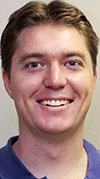
When Gordon Moore predicted in 1965 that the number of components that could be squeezed into an integrated circuit would double each year, he only expected this rate of growth to continue for a decade. In 1975 he revised his forecast for the following decade down to a doubling every two years. Over the years many have misquoted or paraphrased what came to be known as ‘Moore’s law’, but his prediction has continued to prove surprisingly resilient to advances in semiconductor technology.
Now, though, most industry experts believe Moore’s law has just about run its course, and even he himself has stated that he envisages an imminent saturation point. A fitting time, then, for one of the most widely respected roadmaps for semiconductor innovation to close the book on an era. For the last 25 years, the International Technology Roadmap for Semiconductors (ITRS) has surveyed many of the world’s leaders in the field on the technological challenges and opportunities for the semiconductor industry. The recently released 2015 edition of the ITRS will be its last, although it will be succeeded by a more generalised roadmap, named the International Roadmap for Devices and Systems (IRDS), which forms part of the IEEE’s ‘Rebooting Computing’ initiative. More information on this initiative can be found at its online home, http://rebootingcomputing.ieee.org.
The latest edition of the ITRS is sponsored by five regions of the world – Europe, Japan, Korea, Taiwan and the United States. Through the cooperative efforts of the global chip manufacturers and equipment suppliers, research communities and consortia, it identifies critical gaps, technical needs and potential solutions related to semiconductor technology.
In summarising where the industry stands at present, the report states that “In the past 15 years the advent of the Internet, the extensive deployment of Wi-Fi base stations, consumer acceptance of a broad variety of wireless mobile appliances plus the successful combination of fabless companies working in conjunction with foundries, has completely changed the electronics industry... System Integrators can nowadays integrate multiple functionalities in a single chip called System on Chip (SoC) or by means of integrating multiple dice in a single package called System in Package (SIP) as opposed to connecting multiple specialised ICs on a board... System integrators are by and large setting the pace of innovation for the electronics industry.”
It goes on to describe how each new technology generation has tended to produce transistors that can switch faster than those of the previous generation. In the past this electrical feature of transistors enabled microprocessors to operate at higher frequencies and therefore computer performance, as measured by industry benchmarks like millions of instruction executed per second (MIPS), continued to improve at very fast rates.
“Through the years nobody paid too much attention to the fact that power consumption of integrated circuits kept on increasing with any new technology generation, since the industry motto was ‘performance at any cost’, the report points out. This approach came to an end at the beginning of the past decade when fundamental thermal limits were reached by some ICs, resulting in the need to either throttle frequency or reduce the number of transistors. Frequency was selected as the sacrificial victim and it has stalled in the few GHz since the middle of the previous decade.

“These limitations on maximum useable frequency have impacted the rate of progress of the computer industry that has been compelled to develop such methods as complex software algorithms and clever instruction management to improve performance to partially compensate for the aforementioned conditions,” the ITRS continues. As a result, microprocessor architecture has evolved from single- to multi-core, allowing processors to run in the few GHz range while the output rate is increased multifold by combining the output of multiple cores to produce the output signal. Unfortunately this parallel type of solution cannot be used in all cases since some problems can only be solved in a serial way.
Looking ahead to the next 15 years, the roadmap foresees advances in three-dimensional chip structures overcoming the current power scaling bottleneck, and explores multiple new and exciting devices that, after 10 years of research, are demonstrating the possibility of becoming key players in the next decade.
Unsurprisingly, the Internet of Things (IoT), or rather what it describes as the Internet of Everything (IoE), receives special attention as an area of technology that will increasingly open up new applications, help to create new industries, and furthermore play a role in shaping our very society.
Brett van den Bosch
Editor
| Tel: | +27 11 543 5800 |
| Email: | [email protected] |
| www: | www.technews.co.za |
| Articles: | More information and articles about Technews Publishing |

© Technews Publishing (Pty) Ltd | All Rights Reserved